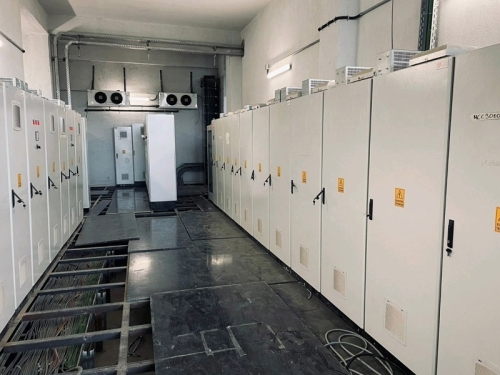
Electrical automation systems are technological systems used for controlling and managing electrical power. These systems are widely employed in industrial plants, power plants, building automation, and other electricity-based applications. Electrical automation systems enhance energy efficiency, ensure safety, optimize operational processes, and reduce human intervention. Here are some fundamental electrical automation systems:
SCADA (Supervisory Control and Data Acquisition): SCADA is an automation system utilized for monitoring, controlling, and managing large-scale industrial processes. SCADA systems collect, monitor, and analyze data through telemetry units, sensors, and control devices. These systems are employed to optimize production processes, detect faults, and enhance energy efficiency.
PLC (Programmable Logic Controller): PLC is a cornerstone of industrial automation. These specialized computer-based devices control machines and processes by processing digital and analog signals. PLCs operate with logic control algorithms based on programming languages and perform complex automation tasks. They are widely used in production lines, factories, and energy systems.
HMI (Human-Machine Interface): HMI is an interface system that enables human interaction with automation systems. These systems allow users to access information and perform control operations using input devices such as touchscreens, keyboards, and mice. HMIs fulfill functions like monitoring operating parameters, managing alarms, visualizing data, and providing an operating interface.
DAQ (Data Acquisition): DAQ systems collect and process analog or digital data from the physical world through sensors. These systems are employed to measure voltage, current, pressure, temperature, and other physical parameters. The collected data is then transmitted and analyzed by automation systems or control devices. DAQ plays a significant role in applications such as process monitoring, quality control, and performance analysis.
Automation Networks: Electrical automation systems integrate with networks used for communication among devices in industrial facilities. Different communication protocols such as Ethernet, Profibus, Modbus, DeviceNet, and Profinet enable communication between various components of automation systems. These automation networks accelerate data transfer, enable real-time control, and facilitate system-wide integration.
Electrical automation systems play a vital role in enhancing the efficiency of industrial processes, achieving energy savings, ensuring safety, and optimizing operational procedures. They contribute to the automation of industrial plants while also supporting environmental sustainability by optimizing energy and resource usage.